You can download the PDF version of Joost’s article HERE.
Introduction
In this post, I share the result of my work preparing for reading the supposed Gospel of Jesus’ Wife and the related Lycopolitan fragment of the Gospel of John for the Coptic Reading Group of the DDGLC Project at the University of Leipzig, Germany, on the 29th of April 2014. Most of the work was done on Sunday the 27th, and its starting point was the (re)discovery of the Gospel of John piece and its dependence of the text of the Qau Codex by Christian Askeland that was so widely taken up in the days before. I used the photos of the manuscript and the parallel text presented on the websites of Mark Goodacre (Recto) and Alin Suciu (Verso), as well as some further text of the Qau Codex mentioned to me in subsequent correspondence with Christian Askeland (for line 9 of the Verso).
My remarks are not meant to be exhaustive but made in order to demonstrate that it is possible to say more about the Lycopolitan Gospel of John fragment than that it was copied from the Qau Codex with only every other line being copied as well as exactly the same line breaks being used. In the damaged areas of the papyrus, strange things seem to be going on, and several of them are highly suggestive of forgery. These facts should be added to the debate about the fragment, not least because they are also relevant for the discussion of the Gospel of Jesus’ Wife. During the reading of the texts with the group (we only had time for the Recto), my colleague Frederic Krueger came up with a brilliant remark that I and the others considered to be the ultimate ‚smoking gun‘ of this fragment (see below). I would like to thank the participants for listening to and elaborating my arguments, which I hereby present to a wider audience.
Reading and reconstruction of the text
For the following presentation of the text of the Lycopolitan Gospel of John piece, both on the papyrus and not on the papyrus, I took the fragment itself as my point of departure, and not its supposed Vorlage, the Qau Codex, as was done by Alin Suciu, Mark Goodacre and Christian Askeland. From the edition of the Qau Codex, however, I took the words and letters missing on the fragment as it is now, in order to get a better feeling for what a complete original would have looked like.
For the same reason I added notes about the number of letters per line, both on the preserved part and for the reconstructed missing part, giving the presumed total number on the right. I have no further remarks to make about these numbers, except for one important observation that was made independently by Christian Askeland (see below), but thought it only logical to look into the matter in the course of my work. With the one exception, at first glance all of these numbers look quite possible to me, but in light of the additional evidence for forgery to be mentioned below, maybe more could be made of this when someone has a closer look.
I do not pretend my text to be a proper edition of the fragment, nor claim that it is perfect, but within the time and circumstances available to me I hope to have given a faithful rendering of both the text visible on the photos and of the edited text of the Qau Codex, both as presented in the online sources mentioned above. The problems I have with the text are indicated in red, and these parts are then quoted and commented upon in the next paragraph.
In several instances in the areas of the lacunae and of otherwise damaged text, the manuscript fragment of the Lycopolitan Gospel of John, which in its better preserved parts seems to follow the Qau Codex to the letter (except for ebol for abal), seems to deviate from its ‚Vorlage‘.
In several instances, traces of letters do not seem to have the right shape; in four cases (Recto, l. 2, 4 and 5 and Verso, l. 4), there does not seem to be enough space for the number of letters expected; in two cases (Recto, l. 4 and Verso, l. 5) a letter seems to have been accidentally omitted; in one case (Recto, l. 8) several letters of one word seem to have been omitted; in one case (Verso, l. 9) a lacuna is much too long for the text it can be supposed to have contained; finally, in two cases (Recto, l. 5 and Verso, l. 4) it seems apparent that the text was actually written around an already existing gap in the papyrus, rather than the papyrus having been damaged sometime after having been written upon.
Whether all these things are due to the clumsiness of a forger (who apparently could not estimate how many letters fit into a lacuna, and did not pay close enough attention to each and every letter of the ‚Vorlage‘) or were at least partly done on purpose, in order to provide some variation from the text of the Qau Codex, something clearly is wrong with this Gospel of John fragment.
I have nothing to add to the discussion about the related Gospel of Jesus’ Wife, except for the fact that in l. 3 of that text, the way in which the final M of Mariam and the M of mpsha are too close together, reminds me of the things that made me suspicious about the Gospel of John piece in the first place.
Whether or not all of the above remarks can survive further scrutiny by others, things seem to add up to (even more) evidence of forgery…
JOOST L. HAGEN (born 1978 in Apeldoorn, the Netherlands) studied Egyptology at the University of Leiden from 1996 to 2003 and was in Münster for the Wintersemester 2004/2005. As from autumn 2005 he is writing his doctoral dissertation about the Coptic texts from Qasr Ibrim in Egyptian Nubia: “Multilingualism and cultural change in medieval Nubia”. During the first phases of this research, conducted between 2005 and 2009 at the Leiden Institute CNWS/LIAS, he regularly worked in the Egypt Exploration Society excavation archive in Cambridge and London and in the Coptic and Egyptian Museums in Cairo. SOURCE














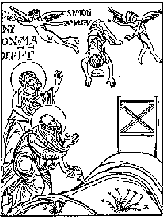




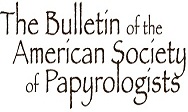
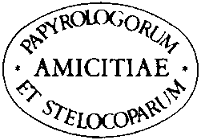
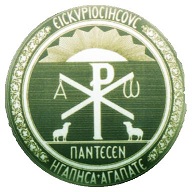





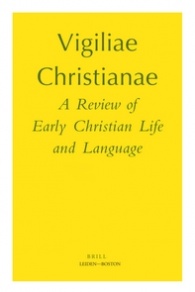






This is a great study of textual criticism. My congratulations and thanks for these contributions. .
Kind Regards,
Georgeos
http://www.agonfilosofia.es/index.php?option=com_content&view=article&id=176&Itemid=15 (Georgeos Díaz-Montexano, “Mary, Jesus’ Wife. A IV Century Coptic Papyrus. True of False?”. The first paleographical study published.)
Yes, one – e. g. Georgeos Díaz-Montexano – has to examine the edges of the gaps, to see if there are traces of ink on them, cf. your analysis of the Gospel of Jesus’ Wife.
I think that r. l. 8, Y in AYW can’t be transcribed in black. (Cf. my deleted comment at Askeland’s, now on TwitPic.)
[Since 25th April, I was working on something similar, but at a very lower level.]
Dear Friend: even I could do a paleographical analysis, for lack of time (I’m focusing on the closing of a book), and because I need very high resolution photos. But from what I’ve seen to date. My conclusion is that it is not the same hand. It is not the same forger. They are two counterfeiters.
The second counterfeiter, tried to copy the style of the letters of the fake John. But I am almost sure that is another forger. Anyway I will need very high resolution photos to analyze strokes and above all, the address that followed when you run them.
As to the experts who have recognized my work, it is true, only one makes it publicly, at least quote me as bibliography, Mr Serge Cazelais (http:\/\/sergecazelais.com\/p2142\/). Only Campliani me has recognized (with praise) for private. In a letter that he wrote to the Dr. Caesar keep of the University of Barcelona. You wanted to know these facts. So, in reality, only an academic expert acknowledged, publicly, my contributions.
Your work is also very important friend. Thank you for everything!
A hug!
Georgeos
« The second counterfeiter, tried to copy the style of the letters of the fake John. » : who is “the second”, here, the GJW forger?
Have you examined Gregg W. Schwendner’s important work ? (Download its pdf.) Why my modest sample [106] is better than his K § (p. 6) ?…
Note : If “Campliani” is « Alberto Camplani », please call him « Pr Dr Alberto Camplani », I think – maybe I’m wrong, Dr Suciu ?… – he deserves it. [And change your tag, etc. !]
Yes, you are quite right about our dear friend, Prof. Dr. Alberto Camplani, Mr. Budelberger.
As to the hypothesis of two forgers (or two different hands), I must confess I am not completely convinced about that.
In my humble opinion, it is the same forger, but he tried to imitate two different hands. Luckily, paleography, a good eye and Dr. Schwendner’s paper help us to see certain idiosyncrasies of the forger.
Of course, I cannot say I am absolutely right since none of us was there when the forger/s forged the forgeries (at least I hope so, for the sake of our friendship).
I think that when you examine, study, a document, you must study it, itself, not an interpretation – Dr King’s transcription (not a transliteration…). The word “ANOK” is not present in the GJW : you have “ANWK”, or “ANOX”, or – if I remember, you pointed it out – “ANOOK”/“ANOOX”, with two “O” joined to make an “W”… You can’t find this letter in Gregg W. Schwendner’s work.
You are right again. I only intended to say that Gregg’s synopsis shows well the resemblance of various letters in both documents.
But even without that synopsis a paleographer can see the similarity.
Dear Mr. Budelberger; Tag changed. Thanks!
Sorry, the correct link: http://sergecazelais.com/p2142/
Thanks Mr. Diaz-Montexano.
However, in these discussions, I would not call myself a first rank expert. I am not a paleographer, neither a papyrologist. I know Coptic, I can discern what is serious work and what is not, but I am more a historian in Ancient Christianity and Neoplatonism (and more and more focusing in history of mysticism). Concerning these papyrus issues, I depend on Alin’s works as well as Christian Askeland, Andrew Bernhard, Mark Goodacre and others.
On my blog I am doing mostly outlining in French what is being said around in English, and mostly for non specialists.
Best Regards
Serge
Thanks Mr. Cazelais, for your modesty…
Kind Regards,
Georgeos
http://www.agonfilosofia.es/index.php?option=com_content&view=article&id=176&Itemid=15 (Georgeos Díaz-Montexano, “Mary, Jesus’ Wife. A IV Century Coptic Papyrus. True of False?”. The first paleographical study published.)
Dear Friends :
I made a brief comparative analysis of the letters , before meeting Mr Schwendner work . Now, I’m even more convinced . They are two different counterfeiters. I see a clear uniformity between all letters in the ” GJohn ” and that are better written . It could almost be considered as authentic Coptic text , were it not for the discovery of Askeland . However, the types of letters in the ” GJW ” are not homogeneous with each other. There’s more variety, were written more slowly and awkwardly. While the text of ” GJohn ” , the letters were written by someone far more dexterous, skillful , better pulse.
I have no doubt ( although difficult to prove this point) they are two different counterfeiters. The author of ” GJohn ” wrote Coptic Top quality and homogeneity , a more correct way . While the author of ” GJW ” is much more awkward. This is a mediocre forger merely trying to imitate letters ” GJohn ” . I guess , I hope ( do not lose hope ) that one day the whole truth comes out . So counterfeiters know if there are two , or if there was a single forger.
As it can achieve very high resolution photos , I can make a much more accurate opinion. Until then , this is my hypothesis : two different counterfeiters
Kind Regards,
Georgeos
http://www.agonfilosofia.es/index.php?option=com_content&view=article&id=176&Itemid=15 (Georgeos Díaz-Montexano, “Mary, Jesus’ Wife. A IV Century Coptic Papyrus. True of False?”. The first paleographical study published.)
2014-05-01 03:15 GMT :
— Blog Stats : 224,513 hits ;
— Email Subscription : 1,636 followers.
Nice Coptic Start-up !…
The first Forger carefully copied the Thompson’s 1924 edition, the second counterfeiter (?) had to build an “original” text, a collage from the Coptic Gospel of Tomas and one word of the Gospel of Luke, giving himself his “heavy hand”…
Mistake ! This morning, we were already tomorrow ! : 2014-05-02 03:15 GMT…
2014-05-02 09:15 GMT :
— Blog Stats : 224,650 hits ;
— Email Subscription : 1,638 followers.
At Dr Suciu’s, as in African savana, enemies peacefully meet near the pond…
Over at NTBlog, Brice Jones has suggested that an alternate explanation of recto line 5 is that an authentic scribe could have been working around an unsuitable section of the writing surface which later became a hole. For those of us on the outside looking in, can we get some interaction going between experts on this point so we can get some idea of the relative probability of these explanations?
The two fragments share the same latinized Coptic characters. They were both written with a brush. The both use the same watery soot ink. GJW is less carefully executed, but, as Schwendner has argued, the same method is at hand. In my now-ancient 2012 Youtube video on GJW, I pointed out the weird Shai. Compare Shai and Omega in these two fragments (or Mu or Upsilon); they are the same. The parallels extend beyond paleography, ink and instrument. The manner of textual fabrication is also parallel; both fragments were created from editions of MSS readily available online.
I am writing my paleographic observations up as an article right now, and the more I look at this, the more I am convinced. Although the GJW may be far more unattractive (paleographically and also regarding ink distribution), neither hand approximates to any known Coptic literary hand, and both have an uncanny resemblance to one another.
I agree with your last words. I respect your contributions and I congratulate you for it, but I disagree with what you discussed earlier. I disagree with Shai, and Upsilon and Mu are the same. They are different when analyzed in detail. The similarity is only apparent because the forger of GJW tried to imitate the style of the letters of GJohn.
I see more and more clear that they are two different people. The writing in GJW is more awkward and slow and more pressure is thicker or heavy writing. The writing in GJohn, is something more elegant and faster. Slightly more fluid. Like he was better acquainted with the Coptic script. So, they are two different hands. Although both two are equally forgers who used existing modern editions. It is possible that both are colleagues. Or the second forger that made GJW, had knowledge that the fragment of GJohn was a fake.
Kind Regards,
Georgeos
http://www.agonfilosofia.es/index.php?option=com_content&view=article&id=176&Itemid=15 (Georgeos Díaz-Montexano, “Mary, Jesus’ Wife. A IV Century Coptic Papyrus. True of False?”. The first paleographical study published.)
I am a paleographically oriented calligrapher and have been trying to write these scripts on papyrus with a lampblack/water/gum ink using brushes and reed pens and am pretty confident about the following:
1. The scribe(s) used a brush, probably a round brush cut square, for both GJohn and GJW
2. The two manuscripts differ in specific ductus(es), but the basic understanding of the letterforms is very similar, and inconsistent with any Coptic letters I have seen
3. The GJW script is deliberately clumsy; in order to create these letterforms one needs to go out of one’s way to sabotage the letters. I suspect that this was a subterfuge to obscure/excuse the grammatical and other problems that the forger knew were likely.
Thank you for your comment, Alexander.
I also think that, although the script may look different at a first glance, it is actually in the same hand.
Alin
Pingback: “Gospel of Jesus’ Wife”-Papyrus’ owner unmasked | AncientEsotericism.org :: Network for the Study of Esotericism in Antiquity
Pingback: How do we edit forgeries? |